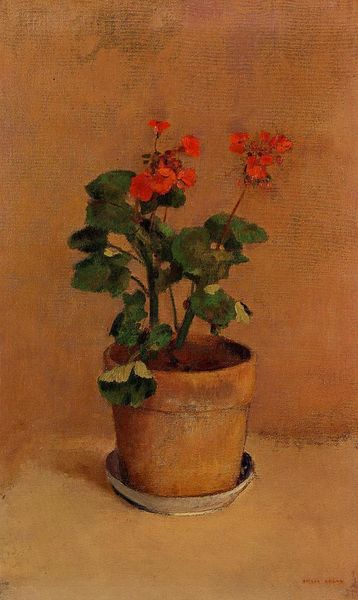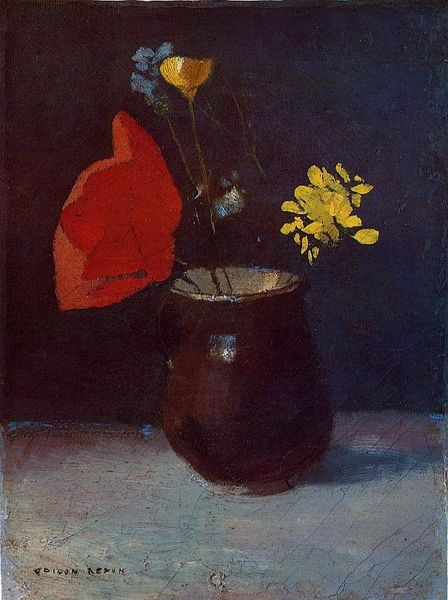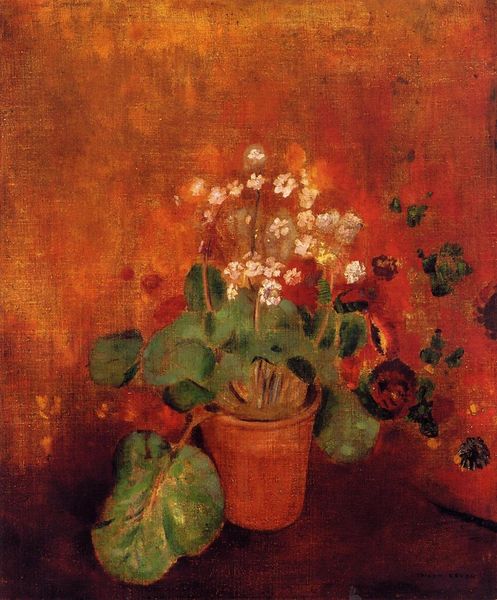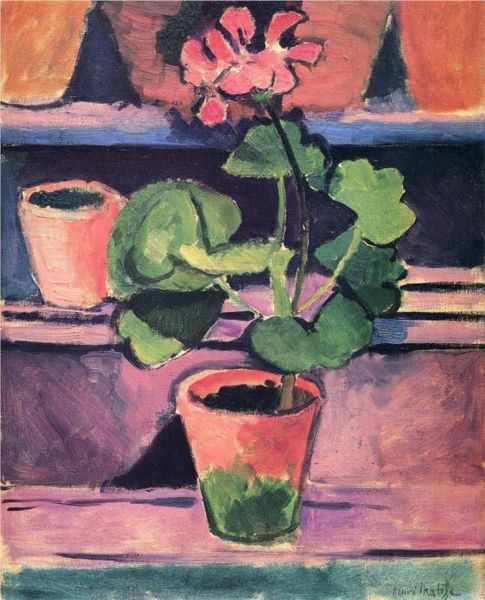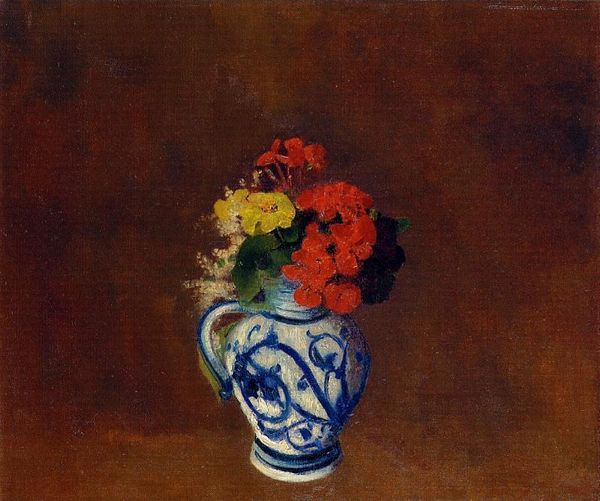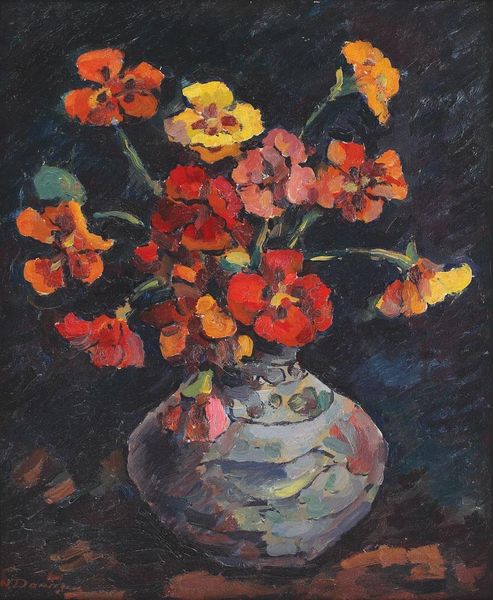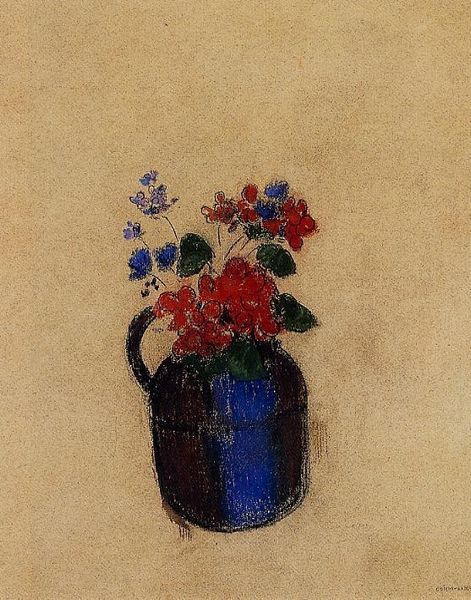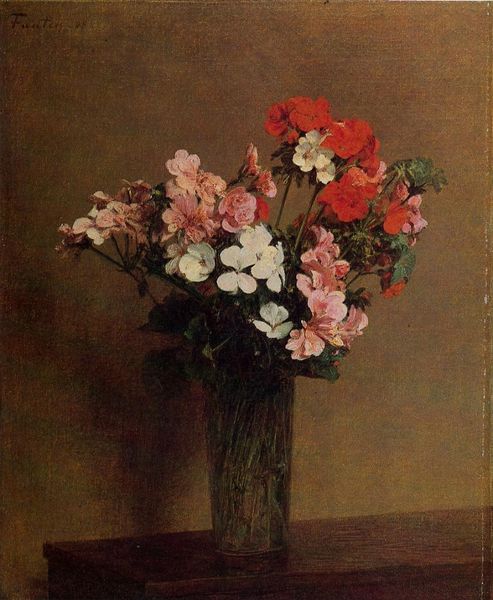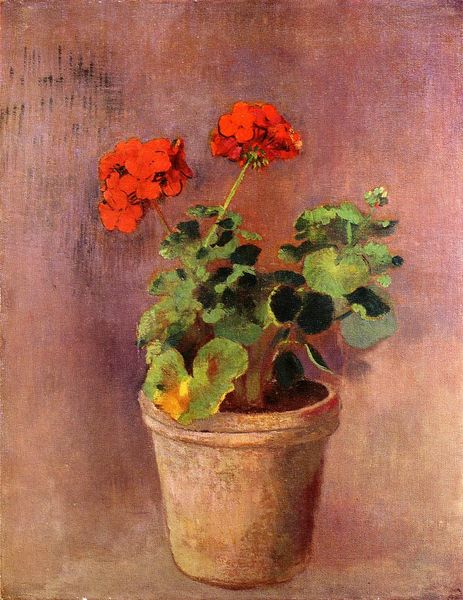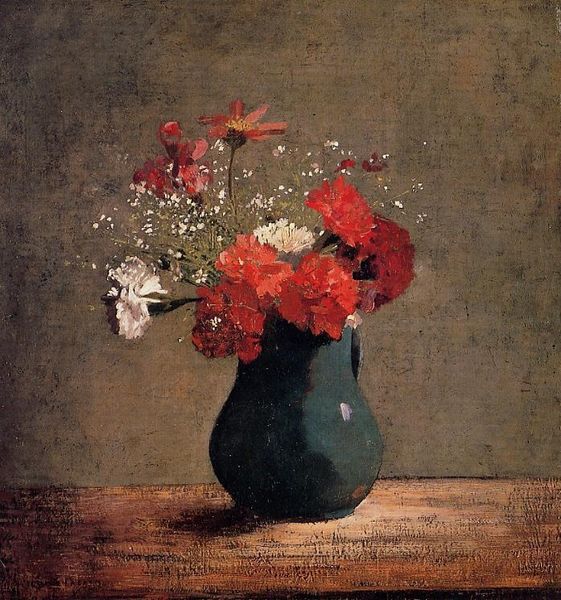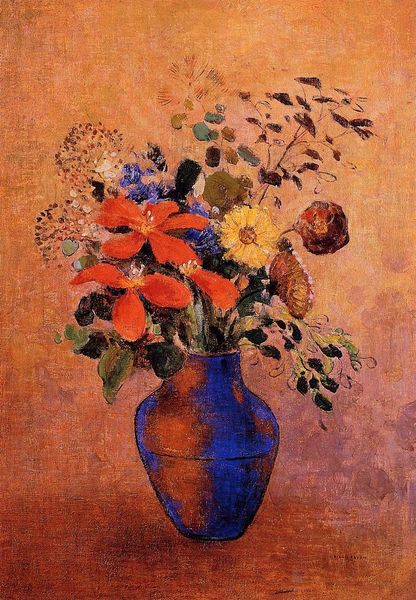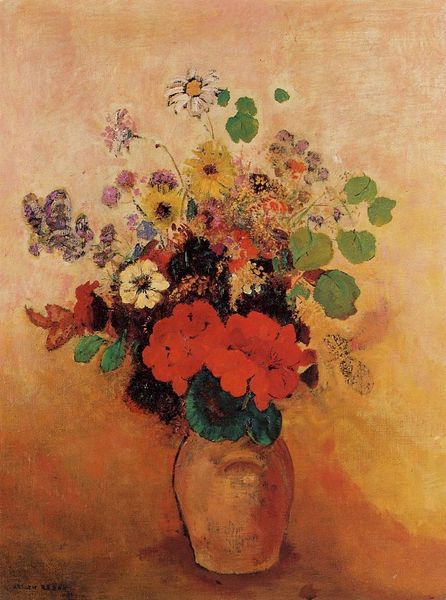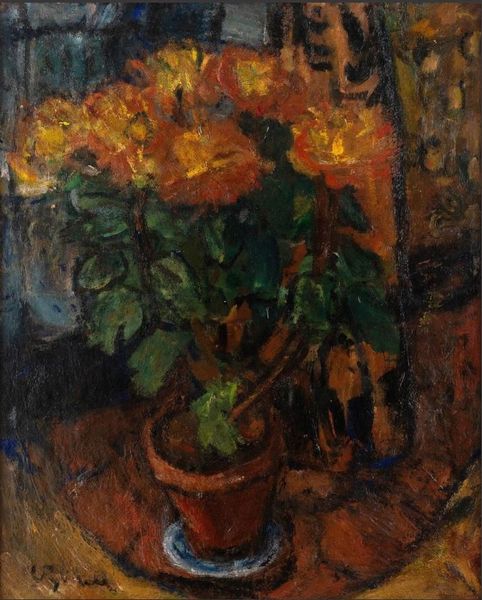
painting, oil-paint, impasto
#
portrait
#
still-life
#
organic
#
painting
#
oil-paint
#
oil painting
#
impasto
#
symbolism
#
post-impressionism
Copyright: Public domain
Editor: This is "Geranium," an oil painting by Odilon Redon. I’m really struck by the contrast between the vivid red of the flower and the murky, dark background. It's like the flower is defiantly alive. How do you interpret this work? Curator: That contrast is key. Considering Redon's Symbolist leanings and the sociopolitical climate of the late 19th century, this isn't just a pretty flower. The geranium, bursting with color against a repressive darkness, can be seen as a symbol of resistance. Think about the rigid societal expectations placed on individuals, especially women, at the time. Does the flower remind you of those expectations, perhaps blossoming despite the odds? Editor: I can see that. The pot containing the plant seems… confining, almost. It makes me think about domesticity. Curator: Exactly. Redon’s choice to depict the geranium in a pot—a space often associated with domesticity and the feminine sphere—invites a dialogue on those very constraints. He painted many flower pictures, sometimes endowing the flowers with human characteristics and placing them against stark or surreal backgrounds. Given that context, how might this image challenge conventional ideals of beauty, femininity, and nature? Editor: I guess it makes the flower seem more empowered, almost like it's fighting against the darkness instead of just being pretty. Curator: Precisely! And this struggle mirrors the fight for individual expression and autonomy against societal norms. Even something as seemingly simple as a flower painting can be a powerful statement when viewed through a critical lens. Editor: This gives me so much to think about! I hadn’t considered the political dimensions of still life paintings before. Curator: Art often whispers truths about power and resistance if we take the time to listen.
Comments
No comments
Be the first to comment and join the conversation on the ultimate creative platform.
